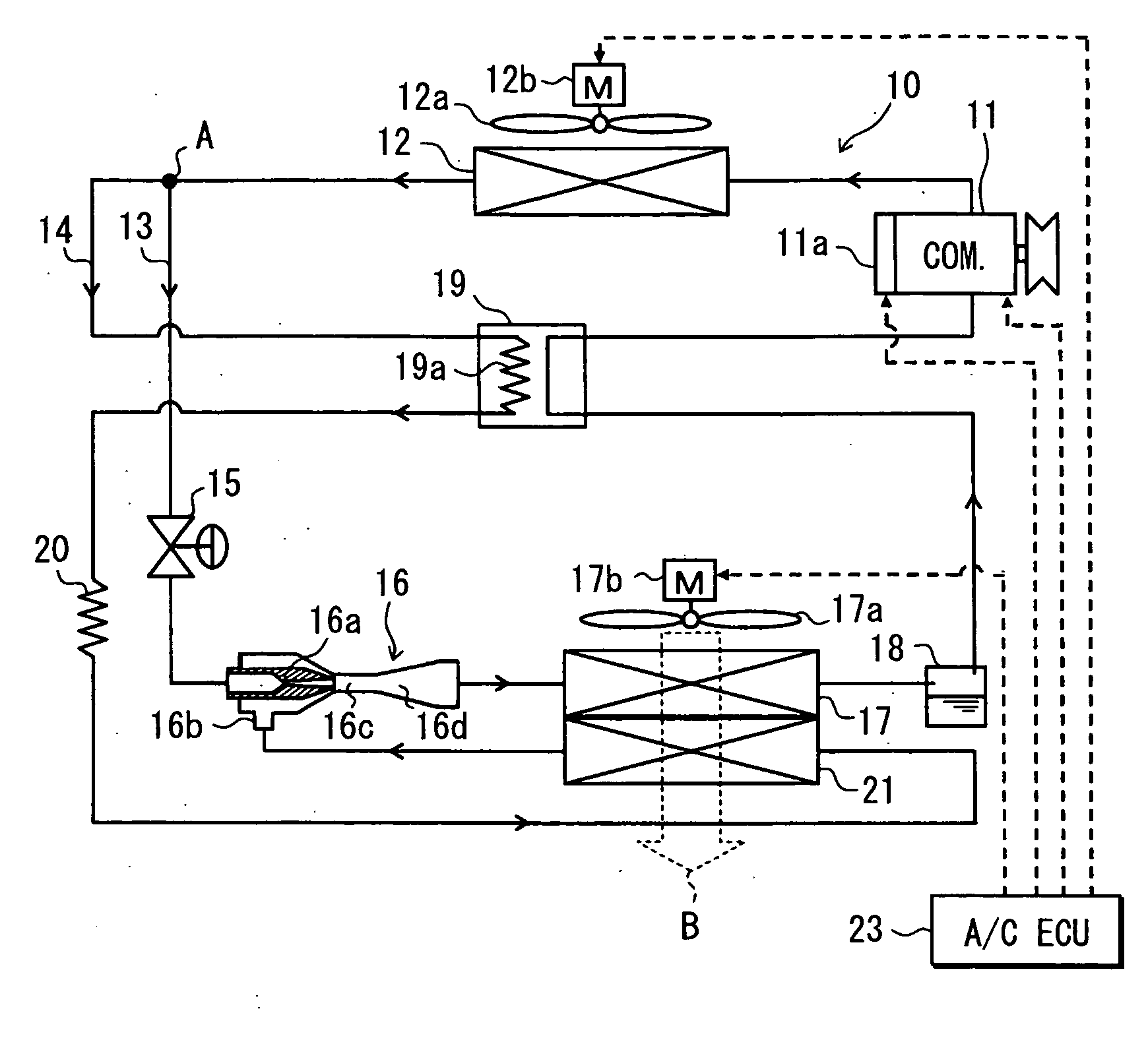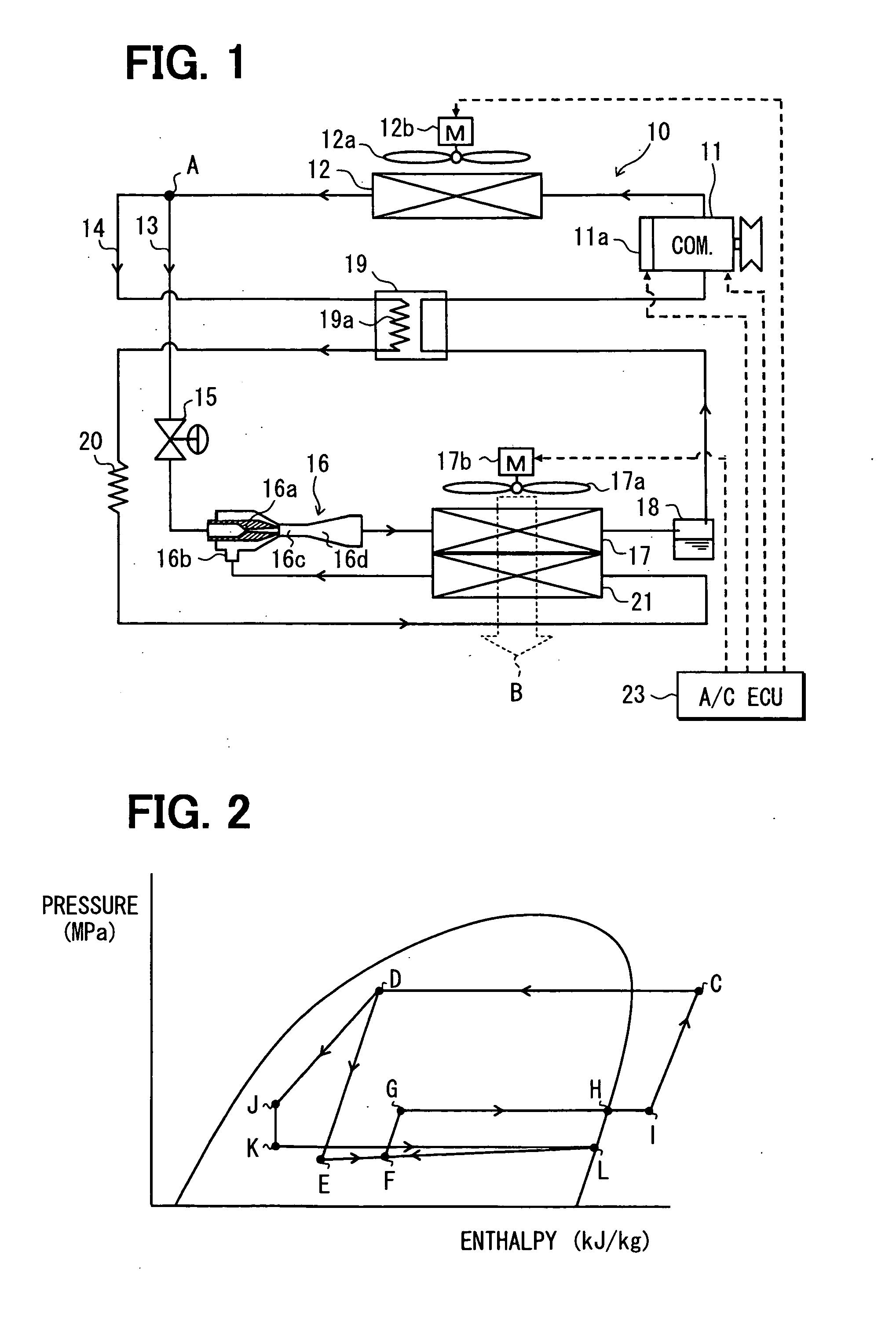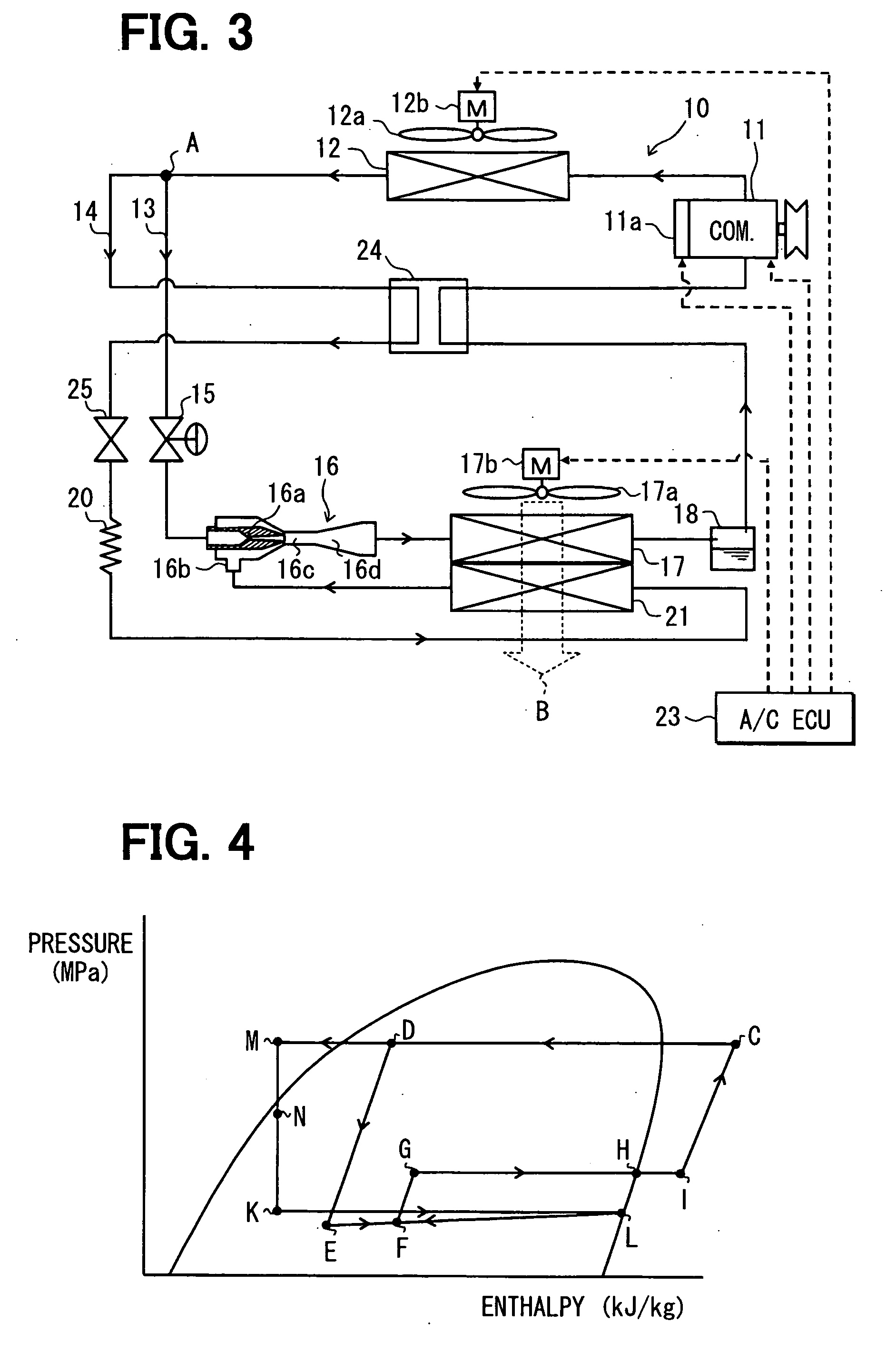Ejector refrigerant cycle device
- Summary
- Abstract
- Description
- Claims
- Application Information
AI Technical Summary
Benefits of technology
Problems solved by technology
Method used
Image
Examples
first embodiment
[0052] Referring to FIGS. 1 and 2, a first embodiment of the present invention will be described below. FIG. 1 shows an entire configuration diagram of an example in which an ejector refrigerant cycle device of the first embodiment is applied to a refrigeration device for a vehicle. The refrigeration device for a vehicle of the embodiment is to cool a refrigeration compartment to a very low temperature, for example, about −20° C.
[0053] First, in an ejector refrigerant cycle device 10, a compressor 11 draws, compresses and discharges refrigerant, and has a driving force transmitted thereto from a vehicle running engine (not shown) via a pulley and a belt, thereby being rotatably driven. Moreover, in this embodiment, a well-known swash plate type variable displacement compressor capable of controlling a discharge volume variably and continuously by a control signal from the outside is used as the compressor 11.
[0054] The discharge volume means a geometrical volume of an operating sp...
second embodiment
[0095] The above-described first embodiment has explained the adoption of the inner heat exchanger 19 as one example in which the refrigerant passage in the suction-port side piping 14 is constructed of the first fixed throttle 19a. That is, the refrigerant flowing into the inner heat exchanger 19 from the branch portion A is throttled while being cooled. However, in the second embodiment, an inner heat exchanger 24 without having a throttle function is adopted as shown in FIG. 3. The inner heat exchanger 24, whose refrigerant passage is not constructed of the throttle mechanism, has only a function of exchanging heat between the refrigerant on the downstream side of the branch portion A and the refrigerant on the suction side of the compressor 11.
[0096] A first fixed throttle 25 serving as the decompression means for decompressing and expanding the refrigerant to bring it into the vapor-liquid two-phase state is disposed on the downstream side of the inner heat exchanger 24 in the...
third embodiment
[0108] The above-described first embodiment has explained the adoption of the inner heat exchanger 19 as one example in which the refrigerant passage on the downstream side of the branch portion A is constructed of the first fixed throttle 19a. However, in the third embodiment, instead of the inner heat exchanger 19 and the second fixed throttle 20 described in the first embodiment, an inner heat exchanger 26 is used as shown in FIG. 5.
[0109] In one refrigerant passage of the inner heat exchanger 26, through which the refrigerant on the downstream side of the branch portion A passes, there are provided with a first fixed throttle 26a constituted of a capillary tube, and a second fixed throttle 26b arranged on the upstream side of the first fixed throttle 26a. For example, the second fixed throttle 26b is constituted of an orifice or a throttle passage.
[0110] Like the first fixed throttle 19a of the inner heat exchanger 19 in the first embodiment, the first fixed throttle 26a is br...
PUM
 Login to View More
Login to View More Abstract
Description
Claims
Application Information
 Login to View More
Login to View More - R&D
- Intellectual Property
- Life Sciences
- Materials
- Tech Scout
- Unparalleled Data Quality
- Higher Quality Content
- 60% Fewer Hallucinations
Browse by: Latest US Patents, China's latest patents, Technical Efficacy Thesaurus, Application Domain, Technology Topic, Popular Technical Reports.
© 2025 PatSnap. All rights reserved.Legal|Privacy policy|Modern Slavery Act Transparency Statement|Sitemap|About US| Contact US: help@patsnap.com



